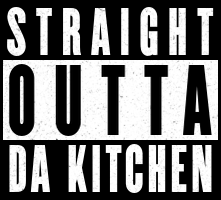
Mastering Defensive Pickleball
Share
Strategies, Skills, and Drills for Better Defense in Pickleball
In pickleball, a solid defensive game can turn the tide of any match. While offense often steals the spotlight, strong defensive play can neutralize an aggressive opponent, create opportunities for counterattacks, and help you stay in control of long rallies. Whether you're a beginner or a seasoned player, learning defensive strategies and skills is essential for a well-rounded pickleball game. In this blog post, we'll cover key defensive strategies, important skills, and drills you can use to sharpen your defensive play.
Key Defensive Strategies in Pickleball
1. Stay Patient
One of the most critical aspects of defense in pickleball is patience. Rushing can lead to unforced errors. Focus on maintaining a calm and composed demeanor, even during long rallies. The goal is to keep the ball in play until you can create an opening for a counterattack.
2. Play Deep
Keeping your opponent at the back of the pickleball court is a tried-and-true strategy. When you’re in a defensive position, hitting deep into the opponent’s side forces them to play shots from the baseline, giving you time to recover and potentially forcing weak returns.
3. Neutralize the Attack
If your opponent is hammering you with aggressive shots, the goal is to soften their power and reset the point. The "soft game" is your friend here—use dinks, drop shots, and blocks to take the pace off their attacks and regain control of the point.
4. Cover the Middle
The middle of the court, also called the "pickleball kitchen" or non-volley zone, is a prime target for offensive players. Good defensive players know to cover this area and avoid leaving gaps that opponents can exploit with hard drives or soft placements.
5. Be Ready for Lobs
Offensive players may use lobs to catch defenders off guard. Always be prepared for this tactic, and practice quick footwork to retreat and hit an overhead smash when necessary.
Essential Defensive Skills
1. Footwork and Positioning
Efficient footwork is key to getting into the right position to play solid defense. Always aim to be on the balls of your feet, ready to move. Stay low and balanced to react quickly to different shots.
2. Blocking and Soft Hands
When opponents hit powerful shots at you, blocking becomes essential. Use soft hands to absorb the energy of fast shots, especially at the net. This will help you control the ball and reset the point instead of sending the ball out of bounds.
3. Dinking
Dinking is not just an offensive skill—it’s a defensive tool that allows you to stay in control of points by keeping the ball low and within the non-volley zone. Good dinkers can force their opponents into awkward positions, giving them an advantage.
4. Patience and Mental Toughness
Defense is as much mental as it is physical. It takes mental toughness to stay in long rallies and keep retrieving difficult shots. Staying focused and positive during defensive play helps reduce errors and keep you in the game longer.
Drills to Improve Defensive Play
1. Dink and Block Drill
In this drill, one player stands at the kitchen line and dinks while the other tries to block or return the ball with soft hands. This exercise improves both players' control over pace and shot placement, helping them stay in control during rallies.
How to Do It:
- Player 1 hits hard shots from the baseline while Player 2 focuses on blocking them with soft hands.
- Switch roles after 5 minutes to ensure both players practice their defensive blocks.
2. Lob and Smash Drill
Lobs can disrupt your defensive game if you’re not prepared. Practice defending against lobs with a partner by taking turns hitting lobs and retrieving them. This drill improves your footwork and ability to respond to overhead shots.
How to Do It:
- One player hits deep lobs from the baseline while the other player practices getting into position and hitting a controlled overhead smash or returning the ball deep.
- Rotate between the two roles to work on both lobbing and smashing.
3. Baseline Reset Drill
This drill focuses on developing your ability to reset the point when you're pushed back to the baseline. The goal is to turn an aggressive rally into a neutral one by hitting consistent, deep shots.
How to Do It:
- Stand at the baseline while your partner hits hard shots toward you.
- Your job is to return the ball deep and consistently, aiming for the opponent's baseline.
- Focus on controlling the shot and resetting the point, rather than trying to win it outright.
4. Crosscourt Dinking
Crosscourt dinking is essential for improving your soft game and placing the ball in hard-to-reach spots for your opponent. This drill focuses on controlling the ball and hitting it to the opposite corner while maintaining patience.
How to Do It:
- Stand at the kitchen line with a partner on the opposite side.
- Dink crosscourt, aiming for the outside edge of the non-volley zone.
- Keep the ball low and controlled. This drill helps you improve both your offensive and defensive soft game.
Conclusion
Becoming a well-rounded pickleball player means mastering defense just as much as offense. By focusing on key strategies such as patience, shot placement, and covering the middle, you can neutralize aggressive opponents and extend rallies. Building skills like blocking, footwork, and mental toughness will further enhance your defensive play.
Regularly practicing the drills outlined here will not only improve your ability to defend but also help you recognize when to switch from defense to offense. Whether you’re playing competitively or just enjoying the game recreationally, a strong defensive foundation is crucial to long-term success on the pickleball court.
Looking for the best pickleball gear? Check out our Straight Outta Da Kitchen Shop for top-rated apparel and accessories to elevate your game!
